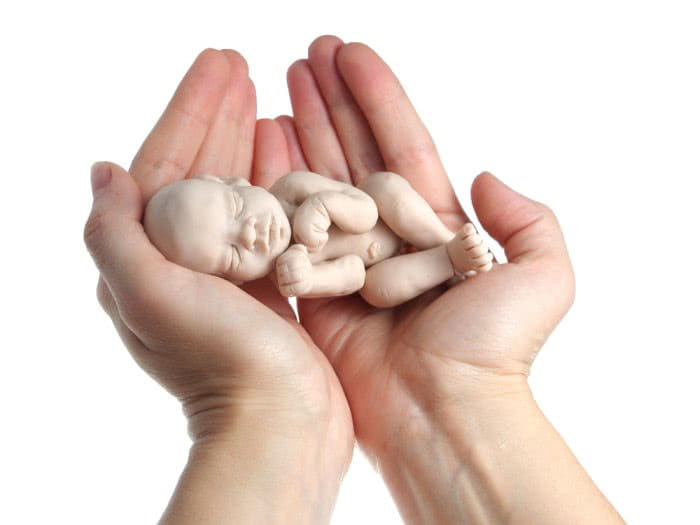The Embryo Transfer Process from Start to Finish
Controlled Hyperstimulation
Due to the need to produce multiple oocytes at once and synchronize the natural cycles of donor and recipient, fertility treatment may commence with up to a month-long round of contraception, customarily in the form of oral birth control pills (BCP). This is an important resting period for the ovaries prior to initiating daily injections of fertility drugs, such as Lupron, Nafarelin, Buserelin or Synarel.[1]
While physicians will administer stimulants to prepare the ovaries, a final injection is required to trigger the maturation of oocytes and induce ovulation within the donor.[2] On average, it takes a woman one to two weeks from the time she initiates the process until her eggs are mature enough for retrieval.[3]
Timeline until Transfer
Upon retrieval of the oocytes, Gynem utilizes either the In Vitro Fertilization (IVF) process or Intracytoplasmic Sperm Injection (ICSI) to introduce recipient sperm into select donated embryos. Donated oocytes undergo assessment to identify their viability and maturity level, so the introduction of sperm may continue right away or within a few days. Afterwards, the clinic moves onto incubating your embryo culture.
Note that incubation could last between 3-5 days, which is an important step in determining which embryos to transfer. At this point in time, you could already be moving into week three of the process, counting up from day one of your cycle.
Day 3 Embryo Transfer or Day 5? Which is Better?
An embryo starts as a single cell that divides repeatedly every 12-24 hours until it reaches a multicell embryo (Day 3) and then blastocyst (Day 5). The question here is, should you receive an embryo of about 8 cells or an embryo containing nearly 100 cells? The answer depends on the number of embryos extracted from the donor.
With a small number of donated embryos, your doctor can successfully identify the best embryos after only a few days in the lab. Embryos transferred at an earlier time have the advantage of developing in a natural uterine environment, which correlates with healthy blastocyst development and successful implantation. With more embryos at hand, determining embryo quality could prove difficult in such a short amount of time, so waiting the extra few days to identify which embryos first form into blastocysts can help.[4]

What Could Lead to Postponement?
As a forewarning, in the unlikely event that some of the following situations should occur, Gynem offers a number of discounts to lessen the stress on individuals undergoing treatment. Here are some known shortcomings that could lead to program postponement or prolongation:
- Unsuccessful hormonal stimulation of the egg donor
- cancelation prior to egg retrieval
- No eggs to be retrieved
- Low number or poor quality of retrieved eggs
- No embryos available on Day 3 of culture
- Poor sperm quality prevents fertilization
- The endometrium lining of the uterus is not developed in time for the scheduled embryo transfer [5]
Think Forward
After navigating all the injections, ultrasounds, monitoring and tricky timing of procedures, no matter how grueling, a successful pregnancy will make it all worthwhile. Commencing at the point in which eggs are donated, it takes a mere 10 days to know the outcome.[6] So, stay positive and think forward.
Sources:
[1] Controlled Ovarian Hyperstimulation: Treatment during IVF. SHER Fertility, haveababy.com/infertility-treatments/ivf-procedures/treatment-undergoing-controlled-ovarian-hyperstimulation.
[2] Shen, Xi, et al. “Optimal Ovulation Trigger–Oocyte Pickup Interval in Progestin-Primed Ovarian Stimulation Protocol: A Retrospective Study Using Propensity Score Matching.” Frontiers in Endocrinology, Edited by Katja Teerds, vol. 10, 15 Oct. 2019, doi:10.3389/fendo.2019.00694.
[3] “IVF Step By Step.” HEALTH University of Utah, Utah Center for Reproductive Medicine, healthcare.utah.edu/fertility/treatments/in-vitro-fertilization/step-by-step.php.
[4] “What Is the Difference between a Day 3 and a Day 5 Embryo Transfer?” San Diego Fertility Center, 2 Sept. 2011, www.sdfertility.com/blog/what-is-the-difference-between-a-day-3-and-a-da....
[5] Wiecki, Aleksander. “Donor Egg IVF Process Abroad – What to Know to Save Time, Energy and Money.” Edited by Natalia Szlarb, EggDonation Friends.com, IVF Media, 16 May 2018, www.eggdonationfriends.com/process-of-egg-donation-revealed-what-to-know....
[6] “In Vitro Fertilization (IVF).” Mayo Clinic, Mayo Foundation for Medical Education and Research, 22 June 2019, www.mayoclinic.org/tests-procedures/in-vitro-fertilization/about/pac-203....





